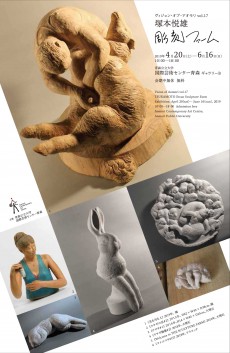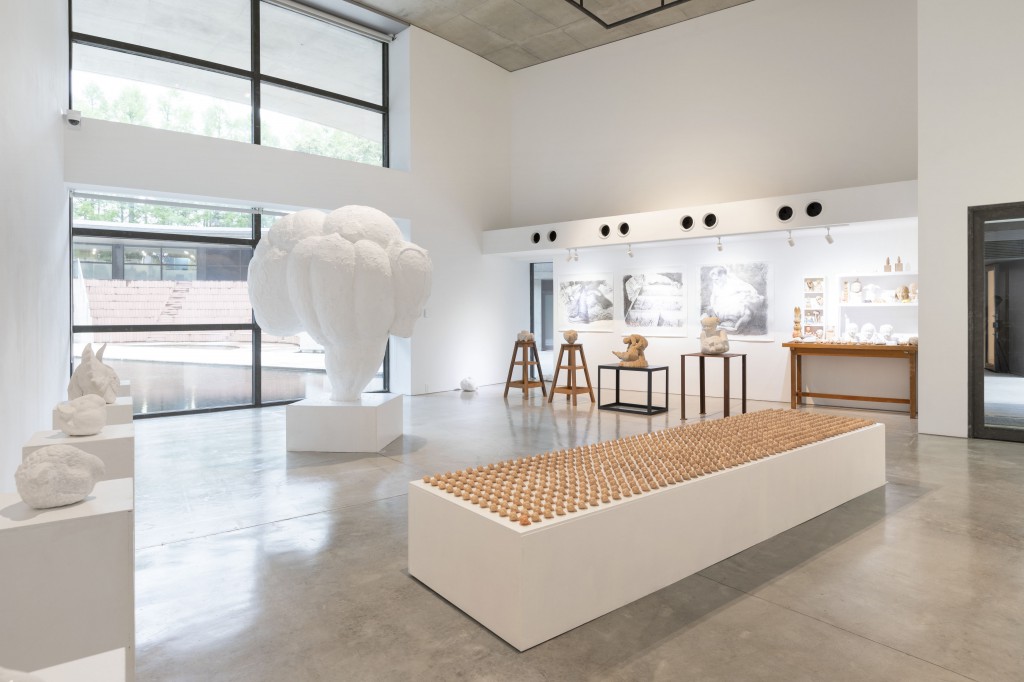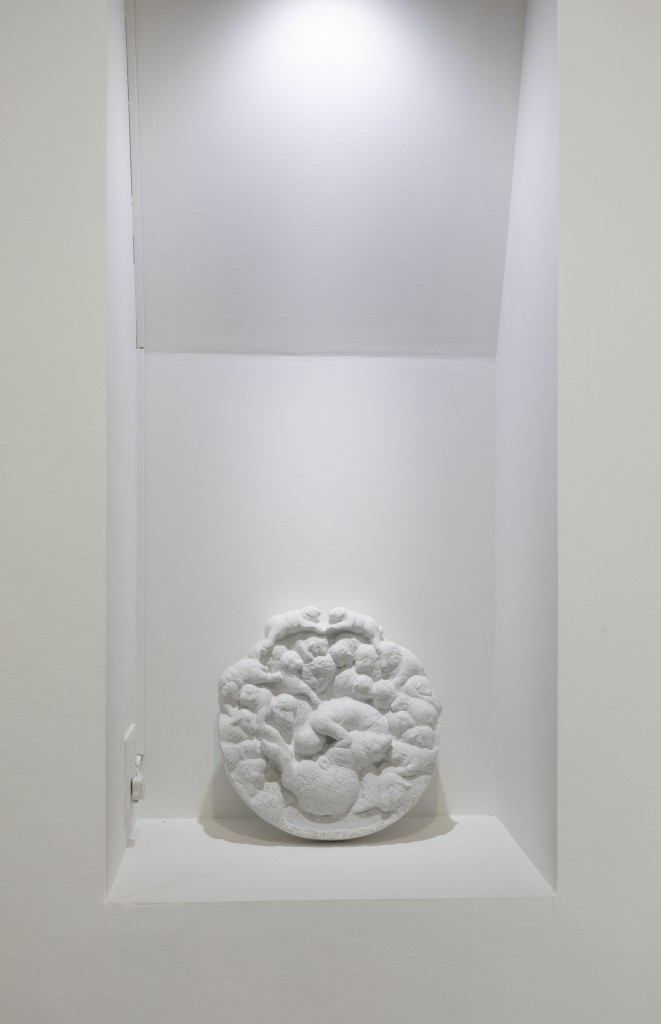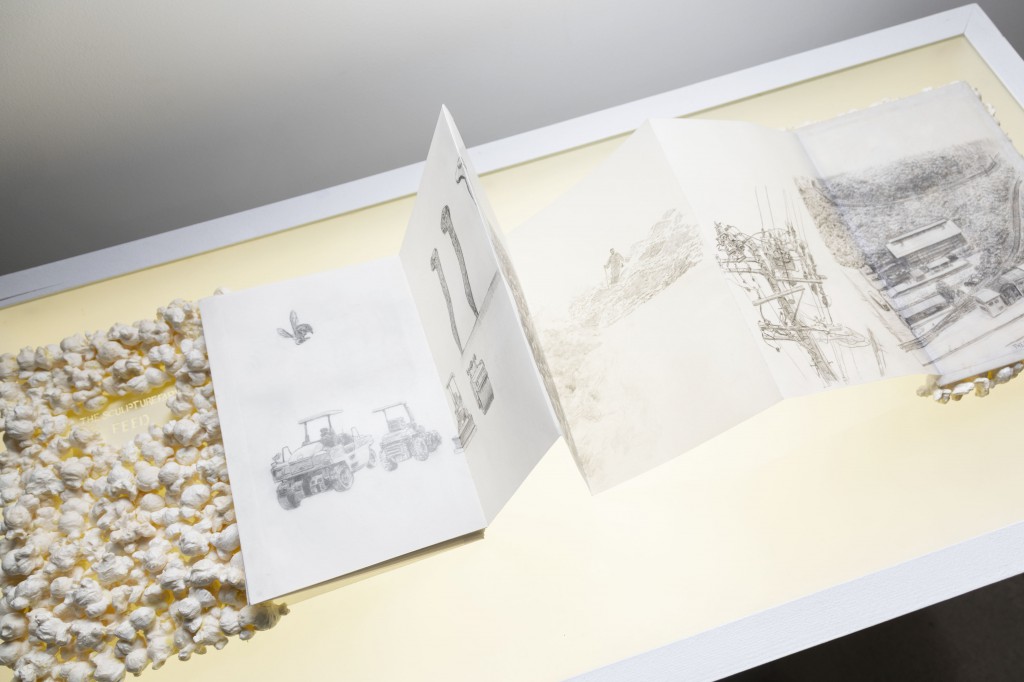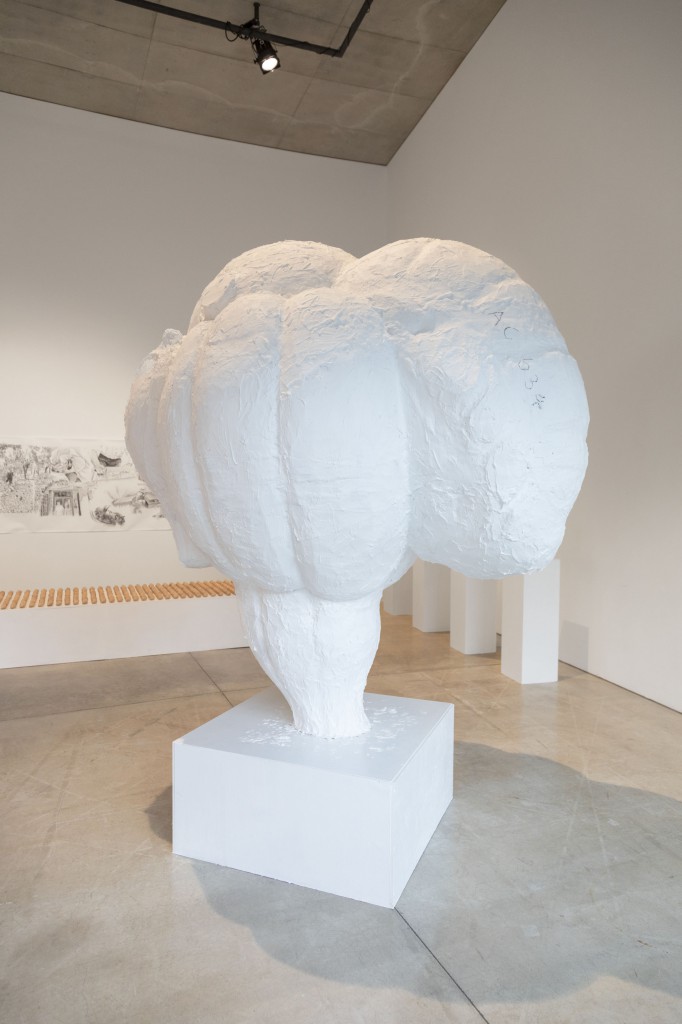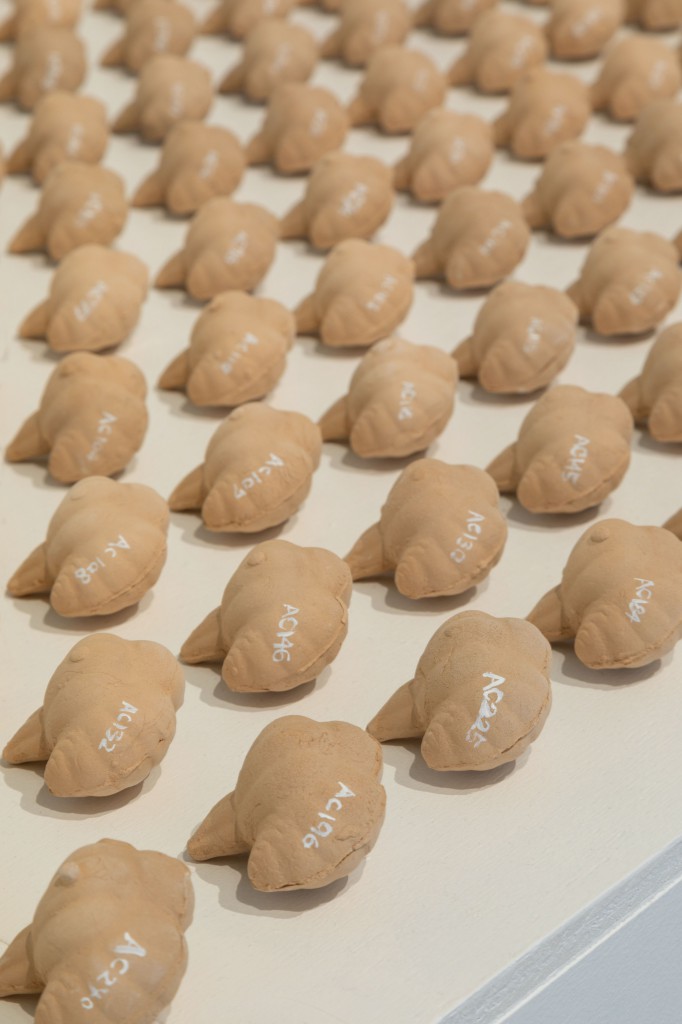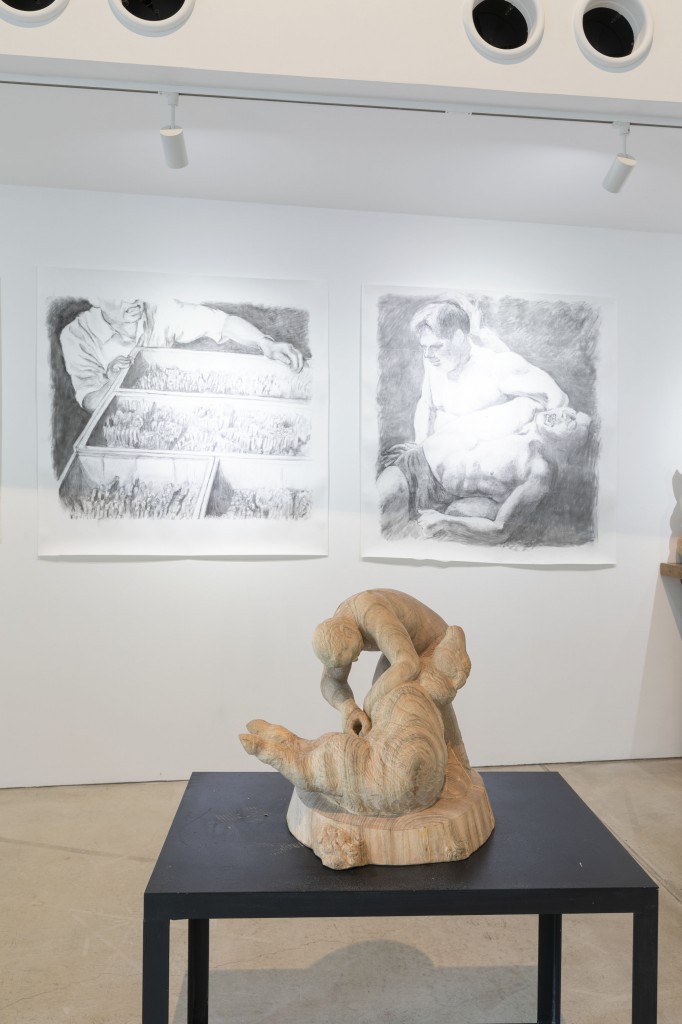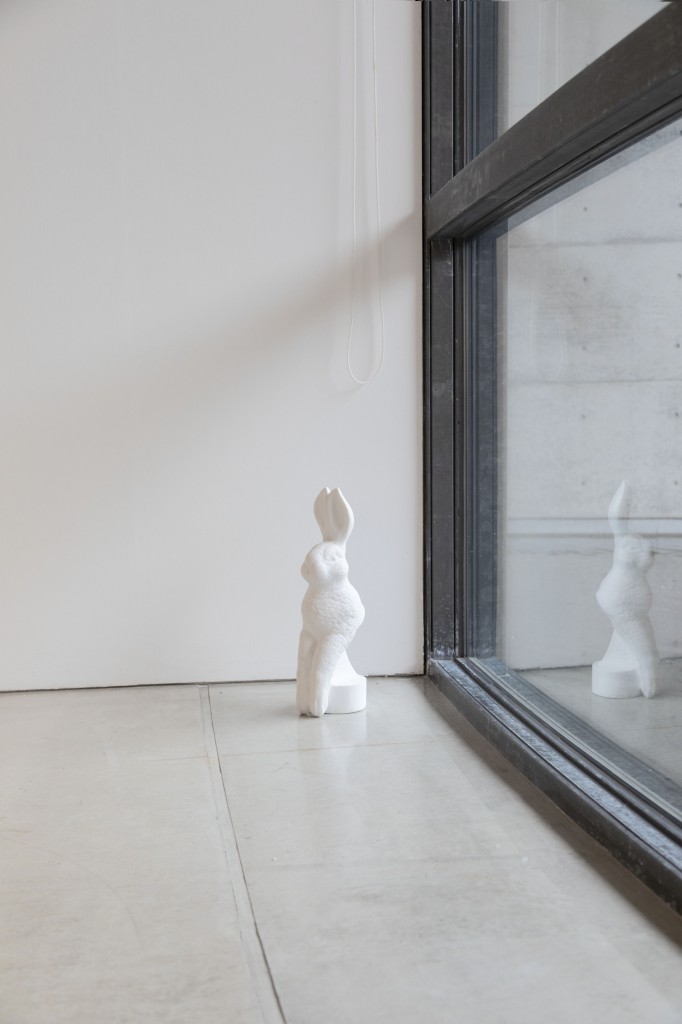
ヴィジョン・オブ・アオモリvol.17 塚本悦雄|彫刻ファーム
塚本悦雄は、彫刻は自然のものに人の手を加え、自然現象を作為的に作り出すことではないかと仮定し活動しています。青森県弘前市に拠点を置き制作を行う塚本は近年、自然豊かな青森でも、農園の作物には人間による様々な介入が行われていることや、津軽藩の武士により飼育されていたという金魚「津軽錦」が人為的に交配された生き物であることなど、地域の現在や歴史を読み解きながら、自身の彫刻観と重ね合わせ作品を制作してきました。
青森ゆかりのアーティストを紹介する展覧会シリーズ「ヴィジョン・オブ・アオモリ」の17回目となる本展では、作品を作り出す場をファーム(農場)と捉え展示を行います。そこでは自然に介入する人間の、そして芸術家の欲望を俯瞰的に見つめる作家の視点が浮かび上がるでしょう。
【関連イベント】
オープニング・アーティストトーク
日時:4月20日(土)14:30-15:30
対象:どなたでも
内容:塚本悦雄と同時開催の展覧会「弧上の光」を開催中の石田尚志が展覧会と作品についてお話しします。
■ワークショップ「石膏で浮き彫り彫刻をつくろう」
日時:5月25日、26日(土、日)13:00-15:00※2日間で1つの作品を作ります。
対象:どなたでも。小学校低学年のお子様は保護者の方のお手伝いが必要です。
定員:12名
材料費:500円
内容:石膏で直径約20cmの円盤型レリーフ作品を作ります。1日目は粘土で原型を作り、石膏で型抜きします。2日目は型から取り出した石膏を削って整え、仕上げます。自由にデザインした自分だけの作品を作りましょう。
―
塚本悦雄(つかもと・えつお)
1962年 熊本県生まれ
1989年 東京藝術大学大学院美術研究科彫刻専攻修了(サロン・ド・プランタン賞)
個展
2015年 「TSUGARUNISIKI in TENNESSEE」テネシー大学マーティン校・Library gallery、アメリカ
2013年 「塚本悦雄—ポートレート-」旧三和化学教材、青森
2009年 「塚本悦雄展—ケイトウ-」メグミオギタギャラリー、東京
2008年 「塚本悦雄彫刻展」アートサロン光玄、名古屋
2002年 「塚本悦雄個展」ギャラリー北村、東京
2000年 「塚本悦雄彫刻展」ギャラリー山口、東京
1990年 「塚本悦雄彫刻展」ときわ画廊、東京
1988年 「塚本悦雄展」ギャラリーK、東京
主なグループ展
2018年 「あかりのありか15th Edge ハシッコ」GALLERY NOVITA、青森
2018年 「ひろさき美術館3−コラボ×コラボ×コラボ」まんなかギャラリー、青森
2017年 「あかりのありか14th「反射(リフレクション)」GALLERY NOVITA、青森
2016年 「ひろさき美術館−武家屋敷×アート マレビトの祀り」弘前市仲町伝統的建造物群保存地区、青森
2015年 「第10回アトリエの末裔あるいは未来」東京藝術大学大学美術館陳列館、東京
2011年 「美術館は動物園展 美術に表現された動物たち」小杉放菴記念日光美術館、栃木
「XYZ」メグミオギタギャラリー、東京
2008年 「MANIF14!2008」芸術の殿堂、韓国
2007年 「アクア・アート・マイアミ07」アクアウィンウッド、アメリカ
2006年 「スキノデリック−彫刻の表層—」東京藝術大学大学美術館陳列観、東京
主催:青森公立大学国際芸術センター青森
助成:公益財団法人朝日新聞文化財団
―
《Welcome to the Sculpture Farm》大理石、37×35×5cm、2010年
《THE SCULPTURE FARM – FEED》トレーシングペーパー、樹脂、477.5×25.5㎝、2010年
《マメコバチ AC634》スタイロフォーム、石膏、130×190 ×200cm、2019年
《マメコバチ AC1~633》テラコッタ、4×5×5cm、2019年
手前:《毛刈りする人 木彫》木、46×45×44㎝、2018年、奥:《THE SCULPTURE FARM – FEED #4》紙に木炭、110×110cm、110×110cm、 115×115cm、2019年
《ウサギ胸像 #2》 大理石、20×15×52cm、2018年
撮影:白井晴幸
ー
実験場の隣人
塚本は、彫刻とは石や木などの自然の素材に人間が手を加えて加工することで自然現象を作り出すことなのではないかと仮定する。そして農園を、品種改良が行われたり農薬が使われたりと、自然そのままの姿ではなく人間の手が加えられることで作物が生まれる場所であると考える。この考えに基づき、本展は「彫刻ファーム」と名付けられた。
ギャラリー正面に鎮座するのが、《マメコバチAC634》である。マメコバチはリンゴ農園で受粉を担う昆虫であり、本作では羽根が取られ足が簡略化され、発泡スチロールに石膏を直付けしたガサガサとした表面を持つ。高さ2mの巨体で、ギャラリーを支配するかのようだ。その手前にテラコッタで作られた《マメコバチ AC1~633》が633個、平台の上に列を作って並べられている。これは、《マメコバチAC634》を更に抽象化し型取りして作られたもので、工業製品のようにも見えるし、焼きしめた土に白い文字で一つずつ番号が振られている様子は、発掘された遺物のようにも見える。《マメコバチ AC1~633》の背後の壁面にはドローイングが掲げられ、リンゴ農園の1年をダイジェストで描き出している。その隣の壁面には、トリプティックのドローイング作品《THE SCULPTURE FARM-FEED #4》が掲げられ、その横には塚本のアトリエから運んできた机の上に大小数々の彫刻が置かれアトリエの様子が再現されている。《マメコバチ AC1~633》を挟んだ両側には、石彫のマメコバチ、ハエトリグモ、羊、鶏、ハムスター、ウサギ、人体などが並べられた。改めて書き出してみると、これほど多くの作品が90㎡のギャラリー内に展示されていたことに驚かされる。
これら膨大な作品群にはそれぞれ彫刻史が引用されており、《THE SCULPTURE FARM-FEED #4》のトリプティック形式はキリスト教美術にその起源をたどることが出来るし、人体のドローイングではラオコーン像を引用した構図が使われている。《マメコバチ AC1~633》はマルティプルと言えるし、《マメコバチAC634》では、634という数字に、彫刻の巨大化を東京スカイツリーにちなんで、と塚本は冗談めかして語っていたが、スカイツリーのデザイン監修には彫刻家の澄川喜一が関わっている。また、《毛刈りする人 木彫》では、古くはローマ時代に遡る彫刻の複製技術で明治期に日本に輸入された「星取り法」を使って制作している。縦横無尽に彫刻史を行き来しながら制作された膨大な数の作品群は、このギャラリーが過去を検証し未来を志向する実験場としてのファーム(農園)であることを示すようである。
ギャラリーの入り口に置かれた2つの作品が、この塚本の束の間の実験場への道案内をしてくれる。会場に入る手前の風除室に置かれた石彫のレリーフ《Welcome to THE SCULPTURE FARM》には、沢山の羊たちと一人の男性が描かれている。塚本は、クローン羊のドリーが生まれたことが、人と自然の関係について考察し羊を作るきっかけになったと言う。[1] 羊は、遺伝子を操作して自然には生まれ得ない生き物を作り出す、人が自然へ介入する究極の形としてギャラリー内のあちこちに何度も登場する。その次に見えるのが、ポップコーンの彫刻で装飾された、アイディアスケッチ集とも言える作品集《THE SCULPTURE FARM ‒ FEED》である。トウモロコシは古代から人類が主食とし、何千年もかけて品種改良され、家畜の餌でもあり、現代では遺伝子組み換え食品もある、言わば人類と共に生きてきた植物である。この2つの作品は10年程前に制作されたもので、塚本が人と自然の関係を彫刻のモチーフとする出発点となった。
塚本の彫刻、特に石彫作品をじっと見ていると、それがただの石なのか、作品なのかが分からなくなることがある。羊や鶏の細かい毛並みや少女の頬のすべすべとした肌、ガサガサした鶏のトサカなど、細かい表面の凹凸と、筋肉の流れに沿って生まれる塊の動きは確かに彫刻が施されていることが分かる。しかし、彫刻された細やかな形の流れを追っていると、それは石そのものの形の流れであるようにも見えてくる。角度によって変化していくその微細な表情を追いかけることは、彫刻を施していく塚本の手の動きを追体験するようで、そこには石から形を見出していく塚本の喜びも見えてくる。彫刻されているからこそ、ごろんとした石そのものの存在感が際立つその塊は、彫刻という人の手が加わった状態と、自然なままの石の状態とのちょうど中間にあるようだ。それは自然物から人工物への変容が目の前で繰り返されるような経験であり、数千年を掛けて関係を結んできた人類と自然との分かち難い関わりが見えてくるようでもある。
遺伝子操作で生まれた羊、品種改良されたトウモロコシ、マメコバチを使って受粉をコントロールする甘いリンゴ、それを食べる人類。どこまでが自然でどこまでが人工なのだろうか。石を割って初めて道具を作ってから数万年かけて、人類は科学技術を発展させてきた。そこにあるのは、便利さの追求だけではなく、知らないことを知ること、出来なかったことが出来るようになること、そしてものを作り出すことへの喜びがあったに違いない。彫刻ファームに集まった昆虫や動物は、人類のエゴを声高に糾弾するわけではない。技術の発展に希望と喜びを見出す人間の行く末を見届ける隣人として、穏やかにたたずんでいる。
- 日時
- 2019年4月20日(土)-6月16日(日)10:00-18:00
- 会場
- 国際芸術センター青森ギャラリーB
- 対象
- 無料
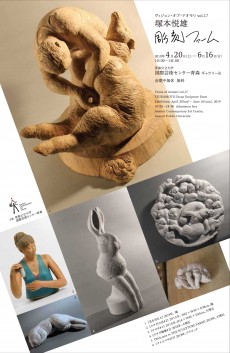
Vision of Aomori vol.17 TSUKAMOTO Etsuo | Sculpture Farm
TSUKAMOTO Etsuo works under the assumption that sculpture is an artificial recreation of natural phenomena, the act of imbuing natural objects with a human touch. Based in Hirosaki, Tsukamoto produces artworks that reflect his view of sculpture while decoding the past and present of Aomori Prefecture, which is itself a natural environment that holds many examples of human meddling. The feudal warriors of the Tsugaru clan historically bred their own variety of pet goldfish, known as the Tsugaru-nishiki, and the region’s crops have long been produced by way of human agriculture. In this year’s 17th annual Vision of Aomori exhibition, which features artists with a connection to Aomori, Tsukamoto interprets the place where artistic creation occurs as a “farm” of sorts, in which lies the perspective of a sculptor who sees the big picture behind the innately human and artistic desire for intervention into nature.
TSUKAMOTO Etsuo
1962 Born in Kumamoto
1989 Completed Graduate School of Fine Arts in major in sculpture, Tokyo University of the Arts
Solo exhibition
2015 “TSUGARUNISIKI in TENNESSEE” Library gallery at University of Tennessee University at Martin, USA.
2013 “Etsuo Tsukamoto – Portrait – “, Former Sanwa Kagaku Kyozai, Aomori, Japan.
2009 “Etsuo Tsukamoto – Cockscomb – “, MEGUMI OGITA GALLERY, Tokyo, Japan.
2008 “Etsuo Tsukamoto Sculpture Exhibition” Art Salon KOGEN, Aichi, Japan
2002 “Etsuo Tsukamoto Exhibition” Gallery Kitamura, Tokyo, Japan
2000 “Etsuo Tsukamoto Sculpture Exhibition” Gallery Yamaguchi, Tokyo, Japan
1990 “Etsuo Tsukamoto Sculpture Exhibition” Gallery Tokiwa, Tokyo, Japan
1998 “Etsuo Tsukamoto Exhibition” Gallery K, Tokyo, Japan
Group exhibition
2018 “Akari no arika 15th Edge” GALLERY NOVITA, Aomori, Japan.
2018 “Hirosaki art museum3 – Collabo×Collabo×Collabo”, Mannaka Gallery, Aomori, Japan.
2017 “Akari no arika 14th Reflection”, GALLERY NOVITA, Aomori, Japan.
2016 “Hirosaki art museum Bukeyashiki×Art”Hirosaki city Nakamachi area, Aomori, Japan.
2015 “New Work From an Old Studio”, Chinretsukan Gallery of Tokyo University of the Arts, Tokyo, Japan.
2011 “Art museum is Zoo”, Kosugi Hoan Museum of Art, Nikko, Tochigi, Japan.
“XYZ”, MEGUMI OGITA GALLERY, Tokyo, Japan.
2008 “MANIF14!2008”, Seoul Arts Center, Korea
2007 “Aqua Art Miami 07”, Aqua Wynwood, USA.
2006 “”Skinodelic – Sculpture Surface – ” The University Art Museum, Tokyo University of the Arts, Tokyo, Japan.
Supported by
THE ASAHI SHINBUN FOUNDATION
ー
Installation view
WELCOME TO THE SCULPTURE FARM, Marble, 37×35×5cm, 2008
THE SCULPTURE FARM – FEED, Tracing paper, Resin, 477.5×25.5㎝, 2010
Hornfaced Bee AC634, Styrofoam, plaster, 130×190 ×200cm, 2019
Hornfaced Bee AC1-633, Terra cotta, 4×5×5cm, 2019
Front: Haircutter (Wood carving), Wood, 46×45×44㎝, 2018, Back: THE SCULPTURE FARM – FEED #2, Charcoal on paper, 428×115cm, 2019
Rabbit bust #2, Marble, 20×15×52cm, 2018
Photo: SHIRAI Haruyuki
—
Participants in the Laboratory
TSUKAMOTO Etsuo assumes that sculpture is the recreation of natural phenomena through the processing of natural materials such as stone and wood. He considers farms to be the places where crops are born, not naturally, but through human intervention, by means of crop breeding and the use of agricultural chemicals. Out of these ideas came the title of this exhibition—Sculpture Farm.
The sculpture Hornfaced Bee AC634, based on the eponymous insect that is used to pollinate apple orchards, is displayed at the center of the gallery. In this piece, the bee’s wings have been removed, its legs simplified, and its rough surface made by applying plaster directly onto styrofoam. Its large two-meter-long body dominates the gallery. In front of it, the 633 terracotta pieces of Hornfaced Bee AC1-633 are arranged in a row on a flat table. They were made by further abstracting and shaping Hornfaced Bee AC634 in molds to resemble industrial products, yet they also call to mind excavated relics, their baked-soil exteriors individually numbered in white letters. On the wall behind Hornfaced Bee AC1-633 hangs a drawing that summarizes the annual cycle of an apple orchard. Triptych drawing THE SCULPTURE FARM-FEED #4 hangs one wall over, next to which sculptures both large and small adorn one of Tsukamoto’s own desks in a recreation of the interior of his studio. On either side of Hornfaced Bee AC1-633 sit a number of stone carvings—hornfaced bees, jumping spiders, sheep, chickens, hamsters, rabbits, and human figures. Listing them off in this way, I am once again surprised that Tsukamoto was able to exhibit so many pieces within the limited space of this 90-square-meter gallery.
In each of these immense multi-piece works, Tsukamoto references the history of sculpture. The triptych form of THE SCULPTURE FARM-FEED #4 can be traced back to Christian art, and the composition of his drawings of human bodies references the statue of Laocoön and His Sons. Hornfaced Bees AC1-633 can be thought of as an artist’s multiple. And although Tsukamoto has jokingly said that the number 634 in Hornfaced Bee AC634 was taken from the height of Tokyo Sky Tree, whose design was supervised by fellow sculptor Kiichi Sumikawa. As another example, Haircutter (Wood carving) was created using the pointing method, a Roman technique for replicating sculpture that was imported to Meiji-era Japan in the late 1800s. The vast number of pieces Tsukamoto has created while tracing the history of sculpture has recast the gallery as a farm, a laboratory for examining the past and setting one’s sights on the future.
Two pieces at the entrance of the gallery guide the viewer to Tsukamoto’s ephemeral laboratory. The stone carving Welcome to THE SCULPTURE FARM, placed in the gallery’s entryway, depicts a single man among a large number of sheep. Tsukamoto says that the birth of Dolly, the first sheep to be cloned from an adult cell, is what led him to create sheep and to consider the relationship between humans and nature.[1] Sheep appear many times throughout the gallery, representing the ultimate form of human intervention in nature—using genetic manipulation to create creatures that would have otherwise never been born. The next item the audience sees is THE SCULPTURE FARM-FEED, a collection of ideas and sketches, the book’s cover decorated with popcorn sculptures. Maize has been a staple food for humans since ancient times. Today’s genetically modified variants, having been bred for thousands of years as food for people and livestock alike, are proof that maize has evolved together with humanity. These two pieces, both created about ten years ago, mark the starting point of Tsukamoto’s use of the relationship between humans and nature as a motif in his sculptures.
Staring at Tsukamoto’s sculptures, especially his stone carvings, the audience may not be able to tell whether they are mere stones or works of art. But the marks of sculpture are certainly apparent—the subtle surface irregularities and the movement of mass that emerges with each muscular stroke—in the fine coats of the sheep and chickens, the smooth skin of a girl’s cheek, or the rough comb of a chicken. The lines of Tsukamoto’s finely sculpted shapes start to look like they are naturally occurring contours within the rocks themselves. To follow the delicate expressions that shift with each change in angle is to experience the movement of Tsukamoto’s hands as they sculpt. The audience can feel his joy in extracting shapes from stone. The presence of the stone’s mass is accentuated precisely because of its sculpted nature, somewhere between a human-carved sculpture and its natural state. This experience of seeing for oneself a natural object transformed into something artificial allows one to see the connection between humans and nature, an inseparable bond that has formed over thousands of years.
Genetically engineering sheep, selectively breeding maize, sweetening apples by way of the hornfaced bee—all done in the name of human consumption. What is natural and what is artificial? Over the tens of thousands of years since stones were broken to make the first human tools, humankind has never ceased developing new technologies. Beyond the pursuit of convenience, they must have felt the joy of creation, the joy of knowing the previously unknown, the joy of being able to do what could not be done before. The insects and animals of Sculpture Farm do not loudly condemn the ego of humanity. Rather they stand calmly as unwitting participants, witnessing the future of humankind as it finds hope and joy in the technology it develops.
KANEKO Yukiko
Chief Curator, Aomori Contemporary Art Centre, Aomori Public University
[1] Excerpt from an artist interview conducted on July 6, 2019 (AC2 No. 21, Aomori Contemporary Art Centre, 2020)
- 日時
- April 20 (sat) - June 16 (sun), 2018, 10:00-18:00
- 会場
- Gallery B
- 対象
- Admission Free
